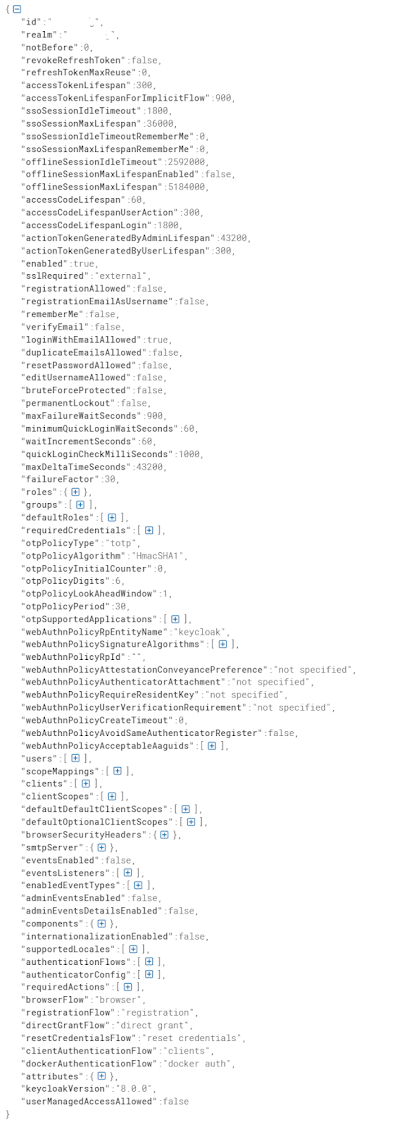Run embedded Keycloak with Spring Boot
<dependency>
<groupId>org.jboss.resteasy</groupId>
<artifactId>resteasy-jackson2-provider</artifactId>
<version>${resteasy.version}</version>
</dependency>
<dependency>
<groupId>org.keycloak</groupId>
<artifactId>keycloak-dependencies-server-all</artifactId>
<version>${keycloak.version}</version>
<type>pom</type>
</dependency>
<dependency>
<groupId>org.keycloak</groupId>
<artifactId>keycloak-crypto-default</artifactId>
<version>${keycloak.version}</version>
</dependency>
<dependency>
<groupId>org.keycloak</groupId>
<artifactId>keycloak-admin-ui</artifactId>
<version>${keycloak.version}</version>
</dependency>
<dependency>
<groupId>org.keycloak</groupId>
<artifactId>keycloak-services</artifactId>
<version>${keycloak.version}</version>
</dependency>
<dependency>
<groupId>org.keycloak</groupId>
<artifactId>keycloak-rest-admin-ui-ext</artifactId>
<version>${keycloak.version}</version>
</dependency>
...
<plugin>
<groupId>org.springframework.boot</groupId>
<artifactId>spring-boot-maven-plugin</artifactId>
<configuration>
<mainClass>com.codeinpackets.auth.
AuthorizationServerApp</mainClass>
<requiresUnpack>
<dependency>
<groupId>org.keycloak</groupId>
<artifactId>keycloak-model-jpa</artifactId>
</dependency>
</requiresUnpack>
</configuration>
</plugin>
server:
port: 8083
keycloak:
server:
contextPath: /auth
adminUser:
username: cip-admin
password: pass
realmImportFile: cip-realm.json
@ConfigurationProperties(prefix = "keycloak.server")
public class KeycloakServerProperties {
String contextPath = "/auth";
String realmImportFile = "cip-realm.json";
AdminUser adminUser = new AdminUser();
// getters, setters
public String getContextPath() {
return contextPath;
}
public void setContextPath(String contextPath) {
this.contextPath = contextPath;
}
public AdminUser getAdminUser() {
return adminUser;
}
public void setAdminUser(AdminUser adminUser) {
this.adminUser = adminUser;
}
public String getRealmImportFile() {
return realmImportFile;
}
public void setRealmImportFile(String realmImportFile) {
this.realmImportFile = realmImportFile;
}
public static class AdminUser {
String username = "admin";
String password = "admin";
public String getUsername() {
return username;
}
public void setUsername(String username) {
this.username = username;
}
public String getPassword() {
return password;
}
public void setPassword(String password) {
this.password = password;
}
}
}
@SpringBootApplication
@EnableConfigurationProperties({ KeycloakServerProperties.class })
public class AuthorizationServerApp {
private static final Logger LOG = LoggerFactory.getLogger(AuthorizationServerApp.class);
public static void main(String[] args) throws Exception {
SpringApplication.run(AuthorizationServerApp.class, args);
}
// Log and verify Keycloak runs fine:
@Bean
ApplicationListener<ApplicationReadyEvent> onApplicationReadyEventListener(ServerProperties serverProperties,
KeycloakServerProperties keycloakServerProperties) {
return (evt) -> {
Integer port = serverProperties.getPort();
String keycloakContextPath = keycloakServerProperties.getContextPath();
LOG.info("Embedded Keycloak server has started, use http://localhost:{}{}", port, keycloakContextPath);
};
}
}
